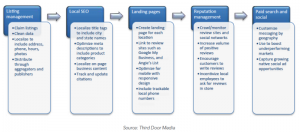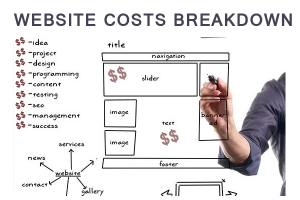
niekverlaan / Pixabay
The global tech talent shortage is relentless and shows no signs of slowing down. As the adage goes, “desperate times call for desperate measures,” and sometimes this approach leads to disastrous recruitment cycles.
According to the Harvey Nash/KPMG CIO Survey, a staggering 65% of respondents stated that the ongoing hiring challenges were hurting the industry (a six-point increase from 2018). In this scenario, tech leaders will continue to have great ideas but no way to execute them because they lack skilled staff.
As the demand for highly skilled professionals grows, companies need to stop relying on luck and concentrate their efforts on taking a more structured approach that’s based on best practices.
What does that mean?
It means that companies need to narrow their approach instead of targeting everyone. They also need to focus more on the individual instead of past experiences.
The following three reasons why companies often hire the wrong tech talent will shed some light on what mistakes made by recruiters and how we can fix it.
1. Desperately Seeking Rockstar Developers

- RyanMcGuire / Pixabay
If hiring managers focus on checking all the boxes on a long list of certifications, experiences, and skills just to put warm bodies in seats, you’re probably going to hire the wrong candidate that doesn’t fit your corporate culture.
Whenever this happens, your new hire will probably move on when the next best opportunity presents itself (and for software engineers in the current landscape, that’s almost daily).
Whether we like it or not, as much as 29% of professionals actively look for other jobs while employed. Another 78% are open to a new job offer (if the right opportunity presents itself) even if they’re not actively looking for a new job.
The best way to resolve this issue is to narrow down your list of requirements. It would be even better to prioritize this list and consider what’s more important.
Is it a qualification? A specific skillset? Or is it recent work experience?
Once you figure out the answer, focus on the individual, and start asking the following questions:
- Will the candidate work well with our in house team?
- Does this individual fit the culture of our organization?
- Do we have the capacity to help them achieve their long-term career goals?
As a rule, hire for skills, but don’t ignore their attitude. It’s the best approach to combat high turnover rates and keep your costs down.
2. Taking Too Long to Make a Decision

- geralt / Pixabay
If you identify the “perfect candidate,” why waste time looking at others?
While it might sound like a silly question, it happens a lot across industries. It was a great recruitment approach decades ago, but today, it directly contributes to failure (especially in tech recruitment).
If you hesitate, your qualified candidate (who is willing to commit), won’t wait for you. They will get headhunted by another organization or, even worse, your direct competitor.
The same is true if you have multiple potential candidates, and you’re still waiting to interview more. In this scenario, you’ll risk losing all of them if you don’t make a quick decision.
As word gets around fast at networking events and on social media platforms, it’ll be a challenge to find more professionals who share a similar profile.
Whenever companies drag their feet and lose their ideal candidate, they have to hire whoever is left. In other words, companies will be forced to hire the wrong people, and the consequences can be far-reaching.
How do you avoid this scenario?
Whenever you identify someone who fits the bill, make an offer right away. If they accept, hire them immediately.
3. Not Embracing Remote Work and Team Augmentation

- Peggy_Marco / Pixabay
Remote working was unheard of just a few years ago. Fast forward to 2020, and it’s quite common to engage with remote workers and digital nomads.
Staff augmentations is also becoming a standard in product teams, but some companies still fail to take advantage of this option. Whenever this is the case, you risk delaying your time to market and losing a competitive advantage.
Unlike major metro areas, smaller cities will have even smaller talent pools. Sometimes, your ideal hire may not want to move to your location or might view remote working as a critical benefit that sways their decision.
So if you’re determined to hire locally or if you have to convince potential candidates to move to where you are, you’ll probably hire someone that doesn’t tick all the boxes.
It’s now critical for traditional businesses to change their working culture and technological infrastructure to accommodate the modern software engineer or data scientist.
If you decide to embrace staff augmentation, you’ll also benefit from not having to deal with HR-related headaches, benefits packages, and more. You’ll pay for the work done, and not a penny more.
As every enterprise is digitally transformed into a technology company, the competition for top tech talent is only going to get worse. So it’s time to reimagine traditional recruitment protocols and up your HR game to keep your company in business.
Business & Finance Articles on Business 2 Community
(61)









